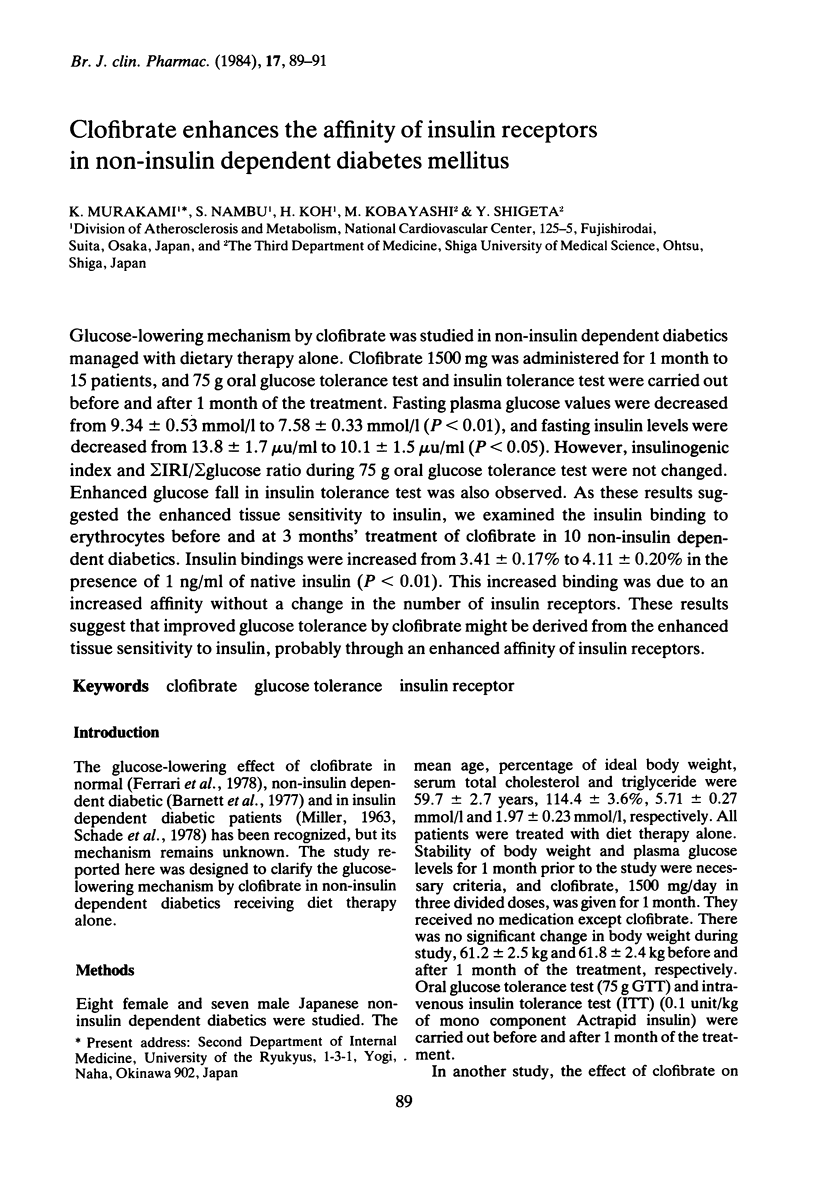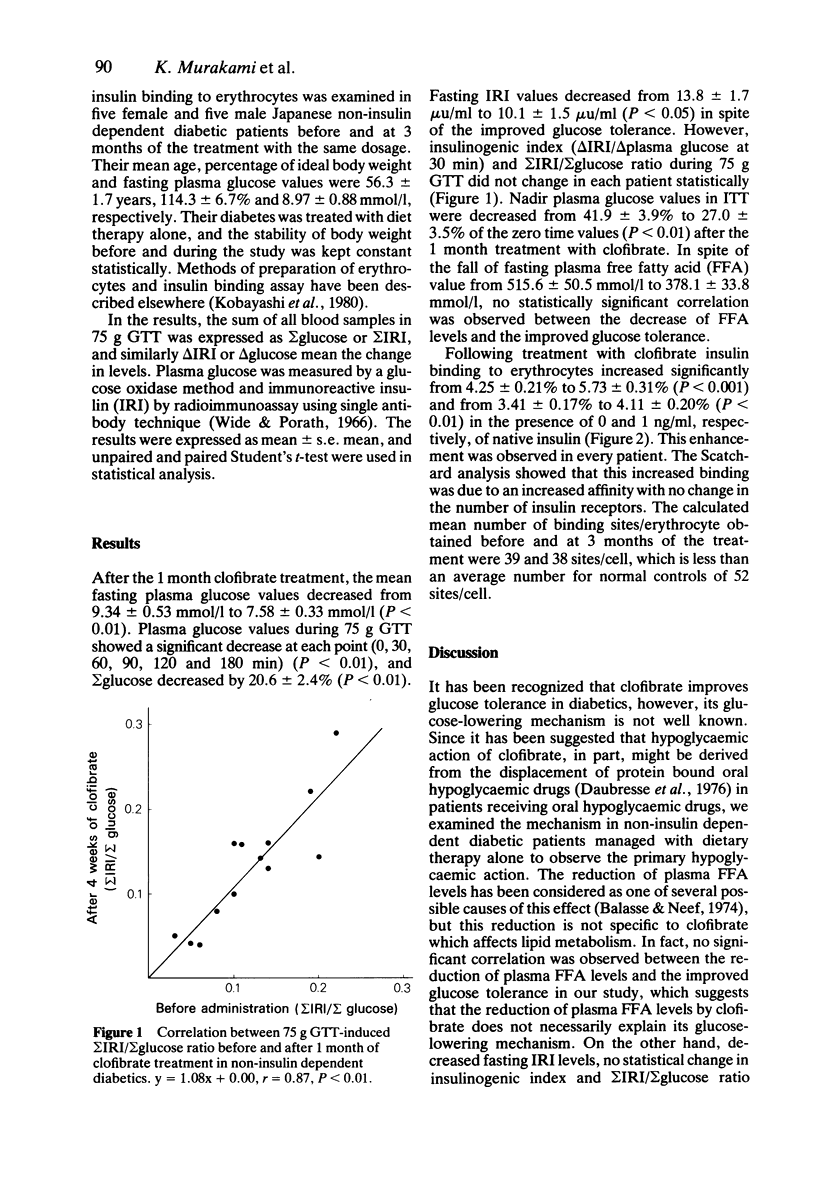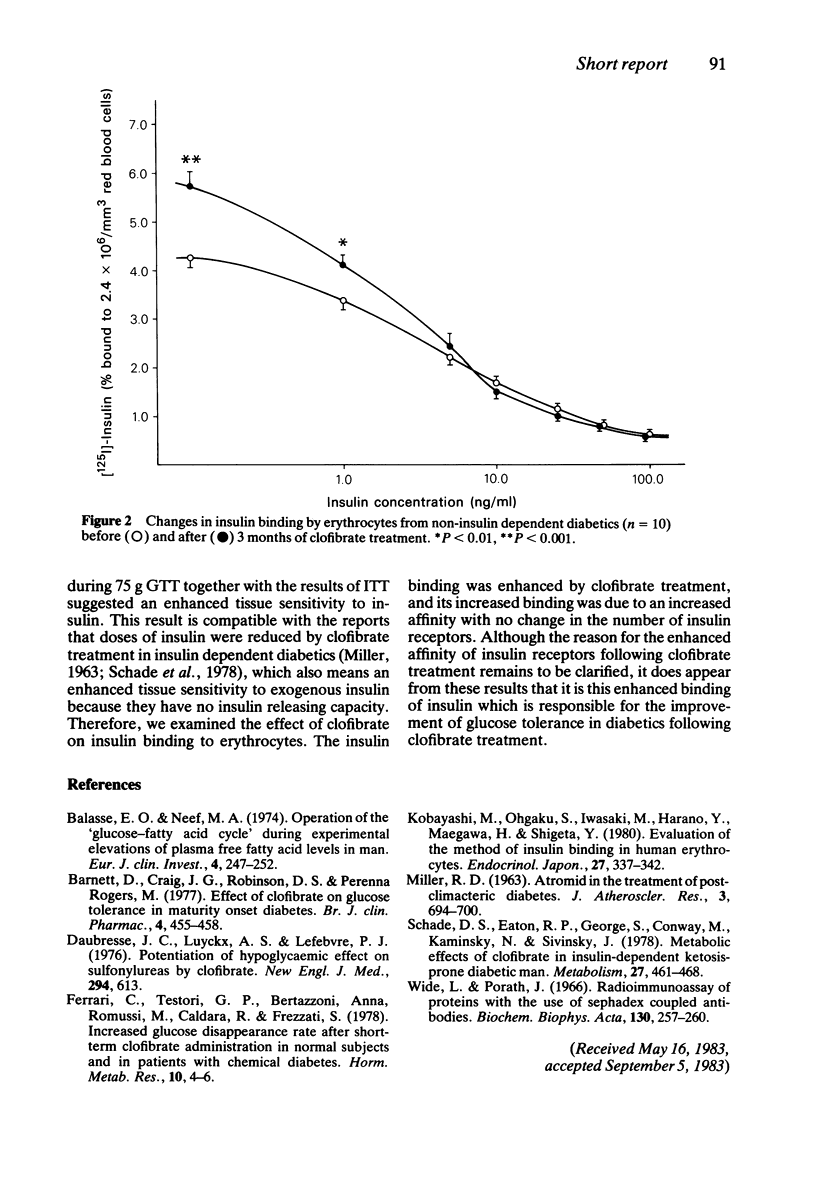Abstract
Glucose-lowering mechanism by clofibrate was studied in non-insulin dependent diabetics managed with dietary therapy alone. Clofibrate 1500 mg was administered for 1 month to 15 patients, and 75 g oral glucose tolerance test and insulin tolerance test were carried out before and after 1 month of the treatment. Fasting plasma glucose values were decreased from 9.34 +/- 0.53 mmol/l to 7.58 +/- 0.33 mmol/l (P less than 0.01), and fasting insulin levels were decreased from 13.8 +/- 1.7 microunits/ml to 10.1 +/- 1.5 microunits/ml (P less than 0.05). However, insulinogenic index and sigma IRI/sigma glucose ratio during 75 g oral glucose tolerance test were not changed. Enhanced glucose fall in insulin tolerance test was also observed. As these results suggested the enhanced tissue sensitivity to insulin, we examined the insulin binding to erythrocytes before and at 3 months' treatment of clofibrate in 10 non-insulin dependent diabetics. Insulin bindings were increased from 3.41 +/- 0.17% to 4.11 +/- 0.20% in the presence of 1 ng/ml of native insulin (P less than 0.01). This increased binding was due to an increased affinity without a change in the number of insulin receptors. These results suggest that improved glucose tolerance by clofibrate might be derived from the enhanced tissue sensitivity to insulin, probably through an enhanced affinity of insulin receptors.
Full text
PDF


Selected References
These references are in PubMed. This may not be the complete list of references from this article.
- Balasse E. O., Neef M. A. Operation of the "glucose-fatty acid cycle" during experimental elevations of plasma free fatty acid levels in man. Eur J Clin Invest. 1974 Aug;4(4):247–252. doi: 10.1111/j.1365-2362.1974.tb00400.x. [DOI] [PubMed] [Google Scholar]
- Barnett D., Craig J. G., Robinson D. S., Rogers M. P. Effect of clofibrate on glucose tolerance in maturity onset diabetes. Br J Clin Pharmacol. 1977 Aug;4(4):455–458. doi: 10.1111/j.1365-2125.1977.tb00761.x. [DOI] [PMC free article] [PubMed] [Google Scholar]
- Daubresse J. C., Luyckx A. S., Lefebvre P. J. Letter: Potentiation of hypoglycemic effect of sulfonylureas by clofibrate. N Engl J Med. 1976 Mar 11;294(11):613–613. doi: 10.1056/NEJM197603112941118. [DOI] [PubMed] [Google Scholar]
- Kobayashi M., Ohgaku S., Iwasaki M., Harano Y., Maegawa H., Shigeta Y. Evaluation of the method of insulin binding studies in human erythrocytes. Endocrinol Jpn. 1980 Jun;27(3):337–342. doi: 10.1507/endocrj1954.27.337. [DOI] [PubMed] [Google Scholar]
- MILLER R. D. ATROMID IN THE TREATMENT OF POST-CLIMACTERIC DIABETES. J Atheroscler Res. 1963 Sep-Dec;3:694–700. doi: 10.1016/s0368-1319(63)80054-x. [DOI] [PubMed] [Google Scholar]
- Schade D. S., Eaton R. P., George S., Conway M., Kaminsky N., Sivinski J. Metabolic effects of clofibrate in insulin-dependent ketosis-prone diabetic man. Metabolism. 1978 Apr;27(4):461–468. doi: 10.1016/0026-0495(78)90100-2. [DOI] [PubMed] [Google Scholar]


